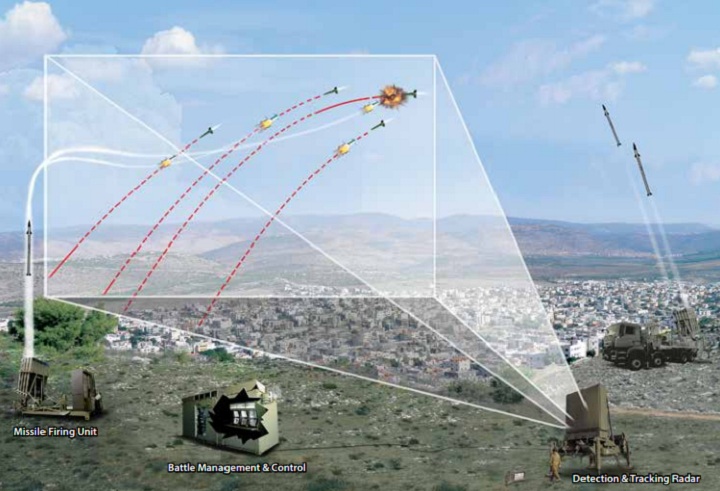Raw video: Israeli ‘Iron Dome’ anti-missile system goes into action

*Please note: This story, originally posted in March, has been updated to reflect details of the latest rocket attacks
Israel has credited its mobile missile defence system with stopping several rockets fired from Gaza this week.
A barrage of rockets has been fired at Israelis cities since Monday, including Tel Aviv, Jerusalem and the city of Dimona——home to an Israeli nuclear facility.
READ MORE: Hamas fires rockets near Israeli nuclear facility: IDF
But the Israeli Defense Force claims, according to Haaretz, it has intercepted 27 per cent of the more than 180 rockets fired into Israel since Monday using what it calls the “Iron Dome.”
The Iron Dome has been in operation since 2011 and is deployed to intercept short-range missiles and mortars, with the goal of protecting civilians in the path of rockets and artillery shells.
It was developed in response to Israel’s second war with Lebanon in 2006, when almost 4,000 rockets landed in Northern Israel, and the more than 4,000 rockets fired from Gaza into southern Israel between 2000 and 2007.
The Iron Dome’s “batteries” — which are made up of radar and three launchers that are each capable of firing off 20 Tamir interceptor missiles, stopping artillery that was fired from locations four to 70 kilometres away in all weather conditions.
It’s first major test came in November 2012, when Israeli officials claimed the system intercepted as many as 85 per cent of the rockets fired from Gaza during Israel’s eight-day battle with Hamas. Although that number has been called into question.
The Iron Dome system’s designer, Israel’s Rafael Advanced Defence Systems, said the batteries are able to “handle multiple threats simultaneously and efficiently” but ignores threats that are predicted to strike outside of the “defended area zone.”
The system does not target rockets or missiles directed at uninhabited areas.
By the end of 2012, Israel had five batteries stationed at five locations in southern Israel and in Tel Aviv, all of which could be moved to other locations when needed.
Israel deployed a sixth battery in September 2013, amid fears of an attack from militants in Syria.
The Iron Dome is by no means cheap, but Israel considers it worth the money.
Israel earmarked about $1 billion for the technology, with plans to buy as many as 15 batteries. A single battery costs about $50 million, while each of the Tamir interceptors cost as much as $100,000.
Time magazine in 2012 cited an unnamed senior Israeli official saying the cost of an interceptor missile was “pocket change” compared to the cost of a rocket hitting Israeli neighbourhoods.
“If these rockets actually hit a neighborhood, in terms of the human costs, the wounded, the destruction of infrastructure would be much greater. So $100,000 is not that much to pay for a house that’s full of kids,” the official said.
The U.S. has kicked in money for Israel to develop and purchase the Iron Dome batteries, with the Obama administration pledging $205 million in 2010 and, citing the success of the program, authorizing a further $211 million in 2013.
In March, the U.S. government, through its Missile Defense Agency, promised an immediate transfer of $429 million in funding for the Iron Dome. The immediate transfer is in addition to the $3.1 billion in assistance that the U.S. provides Israel. The new deal will also see the U.S. gain “significant co-production opportunities.”
While Israel developed the technology to protect its citizens, the government does have an interest in marketing it to other countries.
Rafael Advanced Defence Systems has already worked with U.S.-based Raytheon Co. to develop another new defence system known as “David’s Sling,” which has been tested to stop rockets and other projectiles with ranges between 70 kilometres and 300 kilometres.
*With files from The Associated Press




Comments